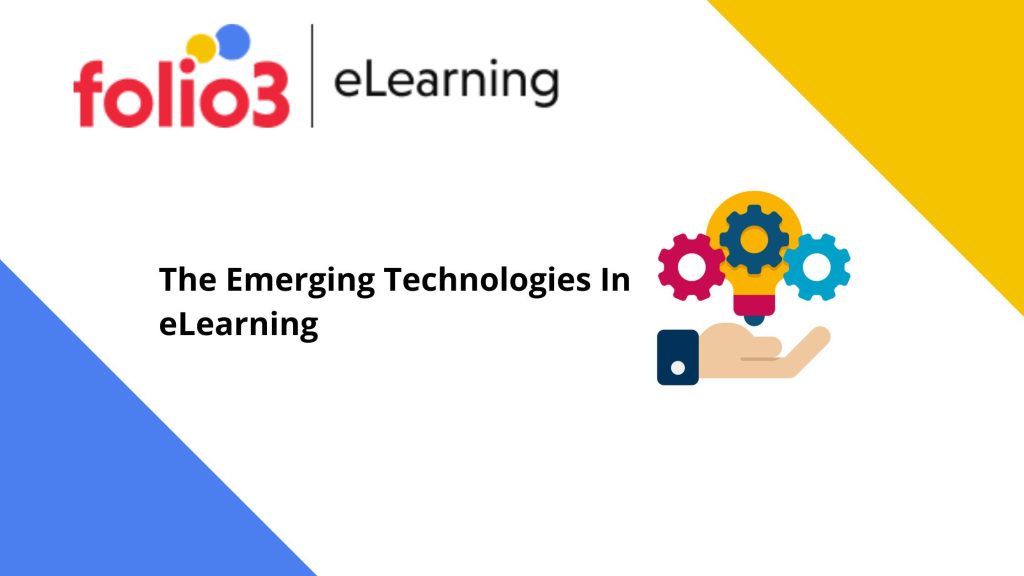
Executive Summary
The capacity of eLearning to improve student performance by utilizing cutting-edge technologies is the main factor driving its exponential scope expansion. These emerging technologies, what are they? How will they improve the educational process? Keep reading the article to unknot the confusion and find out the answers.

Brief Overview – The Trending Tech Of Future Online Learning
The latest technological advances are causing a revolution in the eLearning sector. We can now build new eLearning experiences that were previously unimaginable because of the arrival of new technology, inventive training tools, and cutting-edge equipment. The newest technological advancements greatly impact eLearning and provide innovative new ways to share information and deliver content.
Future Technologies For Online Learning
Across many industries, eLearning is revolutionizing learning and development. By 2026, it is anticipated that the global eLearning market will be worth $336.98 billion. When the epidemic struck, many international firms switched to eLearning to promote continuous learning and boost employee engagement. As a result, instructional designers and eLearning developers are developing innovative strategies to increase learner productivity and performance.
Today’s ideal eLearning is constructed with an adaptable design to support self-paced learning. It supports a variety of learning environments and learning styles, as well is multilingual audio and SCORM (Sharable Content Object Reference Model) compliant. Most firms today concentrate on integrating cutting-edge technologies and components to make eLearning interesting in addition to these features.
Ruling Technologies Of Learning And Development IN the Future
Regarding eLearning, AI-based eLearning can complete tasks requiring human intelligence, such as voice recognition and multilingual material. An enterprise can tailor and direct a learner’s learning path by integrating AI with eLearning.
Other applications include the analysis of massive volumes of data (student responses to assessments), round-the-clock assistance for students’ inquiries or technical problems (virtual assistants), and recommending new or relevant resources. In the next ten years, it is anticipated that the use of AI in eLearning will double.
An efficient content method to increase learner attractiveness in eLearning is incorporating gamified components. Gamification uses game-like features in a course to stimulate interest and encourage learning. Gamification can be used for training for compliance, onboarding, interpersonal and professional skills, and other topics.
Gamification has a number of benefits. It has the capacity to transform difficult, densely detailed subjects into engaging lessons. It encourages students to stay with the training all the way through. Gamification can help students choose courses that prepare them to tackle real-world challenges. It will be essential in the upcoming ten years.
Both augmented reality and virtual reality are developing quickly. One can experience a mix of real-world and artificially generated elements with AR. It provides actual surroundings for a person and gives them the option to add digital things. On the other hand, VR consists of simulated computer-generated elements that appear real. A person can virtually engage with an environment via VR.
Learners’ engagement can be increased, and they can interface with real-world scenarios by incorporating AR and VR into eLearning. Knowledge retention and application will consequently improve.
It can enhance learning opportunities and lessen feelings of loneliness. For instance, AR in eLearning can assist in developing sophisticated gaming quests and assessments, whereas VR can imitate real-life circumstances relevant to the subject and improve its comprehension. These technologies will undoubtedly rule the eLearning industry.
- Wearable Technology
Wearables, also known as wearable devices, are intelligent electronic gadgets that can be implanted or worn as accessories on the body. Since these wearables can deliver training experiences almost everywhere, they can serve as flexible corporate training tools. Wearable technology has the potential to elevate scenarios and simulations, which is why it may be applied to create learning solutions that are much more engaging and understandable.
The business should locate learning experiences that are well suited for wearables and figure out how to incorporate eLearning into employees’ everyday schedules before beginning to deliver eLearning on wearable devices.
- Miscellaneous Technologies
Future technologies are diverse, and eLearning has a fantastic future. In addition to the ones mentioned above, a number of additional listed below will benefit the Learning and Development department.
- Microlearning
This is the division of time-consuming material into shorter, more manageable lessons. It can be presented through voice, video, or illustration. Flexibility is increased while delivery costs and time are reduced.
This refers to making it possible for educational content to be delivered via mobile devices when staff members seek to learn while on the road and work remotely; it is successful.
The Bottom Line!
The eLearning tools listed above have a growing range of applications, and most firms have already begun integrating them into their work environments. The sector is developing cutting-edge technologies that encourage learning and skill upgrading for every person across industries.

FAQs
Online education involves using a learning management system (LMS). When students log in, they may access the dashboard to locate the course material, which is often divided into modules and lessons. They can interact with teachers through the dashboard, participate in online classes, chat with classmates and teachers, and more. Some online schools have taken the experience to the next level by offering mobile applications, a certain number of online courses, and “on-request” instructor help, among other innovations.









